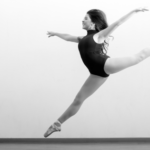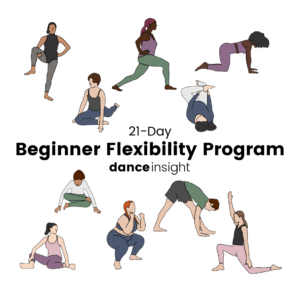
First Day Tips for Dance Teachers
This post may contain affiliate links. If you click on one of these links and make a purchase, we may earn a small commission at no additional cost to you. All affiliate links are marked with an asterisk.
No matter whether you teach ballet or algebra, the first day of class is the most important day of the year. Yes, you could argue that every day has equal value, but the first day is when your teaching skills matter the most. It’s your time to establish the rules, earn your students’ respect, and set the stage for the rest of the year. How it goes on the first day is usually a good indicator of how it will go every day, so you want the first day to go well.
I’ve been teaching dance for 8 years, and I still get nervous on my first day with a new class. There’s a lot to consider and a lot to prepare for, and that can be intimidating, especially if you’re a brand-new dance teacher. That’s why I’ve put together these first day tips for dance teachers, so you can feel confident and prepared as you launch into a new school year!
Before the First Day
Know your roadmap and yearly goals
Your list of yearly goals is simply everything you want your students to learn in the year that you have them. (If you’re teaching a shorter session, such as a semester or 10-week class, adjust accordingly.) These goals should stem from your studio’s syllabus. If you haven’t been shown the syllabus for your class already, ask your studio director! Almost all dance studios have one.
In addition to the “hard skills” on the syllabus, i.e. steps and technique, include some “soft skills” in your yearly goals as well. These could include memorizing choreography, performance quality, vocabulary, anything non-technical that will help your students become better dancers.
Your roadmap is a rough outline of what you’d like to cover each week, based on your yearly goals. Keyword rough. You will almost certainly need to adjust as the year goes on, so don’t put hours of work into December’s lesson plans before you even meet your kids. A few bullet points will suffice for now!
Write your lesson plan
Even if you’re not much of a planner, I recommend planning heavily for the first day. So much is up in the air already that you really don’t want to do too much improvising. Not to mention you might have parents’ eyes on you more closely as they assess if they want to keep their child in this class, so you want to be on top of it!
My top three tips for dance lesson plans are:
- Better too much than too little. It’s easier to run out of time and discreetly cut out an activity than to make up activities on the spot when you have an awkward 5 minutes left.
- As much as you can, plan what music will go with what combo. It saves so much time!
- Change the activity every 15 minutes, maybe 20 for teenagers. For under age 7, change the activity every 10 minutes.
Organize Your Materials
When I’m teaching, I like to be prepared for every situation. I carry a huge bag full of stuff that seems pretty excessive until the unexpected happens. You forget to charge your iPod and no one has a charger… a kid has a boo-boo and the studio has a sudden shortage of Band-Aids… the aux cord dies on the day of the show… All of those have happened to me, and that’s just naming a few.
Sometimes things will happen that are not your responsibility. If the studio’s out of Band-Aids, that’s the studio’s fault, not yours. However, the more prepared you are, the quicker you can solve issues, and the more smoothly your classes will run.
Here are some things to consider including in your teaching bag:
- Dance shoes (duh) and spare clothes
- Notebook or binder for lesson plans and other papers
- Main music source and backup(s) – I bring my phone, an iPod, and CDs.
- Sticker books (even if you don’t teach little kids – you might need to sub!)
- Band-Aids
- Hair ties, bobby pins, hair nets
- Small portable speaker (for when the sound system dies)
- Video recording device if not using your phone
- Chargers for all your devices
- Scissors, pens, pencils, dry erase markers, maybe a sharpie
- Resistance bands, if your studio doesn’t have a stash
- Travel pack of tissues
- Hand sanitizer
With your yearly goals, roadmap, lesson plan, and materials, you’re good to go for the first day of dance class!
First Day Goals for Every Dance Class
There are a few things you should always aim to accomplish on the first day, whether you’re teaching ballet or hip hop, age 3 or adult, in a studio or in a church basement.
Learn Every Name
I know, this is asking a lot. Some of us really struggle to learn names, and this can be especially difficult if you have a big class. But I can’t stress enough how important this is. Making an honest effort to learn your students’ names shows that they matter to you. You don’t have to be perfect, just do your best and they’ll see that you’re trying.
The worst thing you can do, in my opinion, is say, “I’m bad with names.” While it’s good to be honest, saying you’re bad with names is just making excuses for yourself. You wouldn’t say, “Sorry, I’m bad at giving corrections,” even if you were, right? You would just do your best and try to improve because it’s part of your job as a teacher. Learning names is part of your job as a teacher.
Establish the Rules
You might think this is just for the little ones, that the rules should be implicit in classes with older students, but not necessarily! I can think of so many reasons to explicitly go over your rules in a class with older students. You may have someone who is new to the studio, you might have pet peeves that their other teachers are more slack about, and even if this is your third year in a row with the exact same kids, they might need a little reminder that rules exist and they shouldn’t try to take advantage of you.
Establishing the rules doesn’t need to be a big serious ordeal. If you’re teaching little ones, sit them down in a circle and discuss the rules in a kind but clear voice. Don’t give an “or else.” They should learn to follow rules for rules’ sake, not because they’re afraid of consequences. If you’re teaching older kids, say a few quick sentences after roll when you have their attention. Make eye contact so they know you’re serious.
Observe and Assess Your Students
You made all your goals and plans based on an assumption of what these students were going to be like. Now you get to actually see them dance. It’s very likely that you’ll need to make some adjustments based on what you see that first day. The kids might be way above or below the skill level you planned for, or you might notice a technical issue that needs to be tackled before you can cover some of your goals. Don’t tell them they’re being assessed – they don’t need that pressure. Simply jot down a few notes after class, then adjust your yearly goals, roadmap, and lesson plan for next week accordingly.
Quick Tips for Different Age Groups
Little Ones (3-6)
- Structure is key. Establish a structure on the first day, and stick roughly to that outline for every class after. This helps kids focus, especially if the activities are in 10-minute chunks or less.
- Be steadfast in your rules. If you say no talking without raising your hand, don’t let it slide even once, because then it comes across as a suggestion, not a rule. You might have to spend the whole class saying, “Please raise your hand if you have something to say,” but if you drill it in at the beginning, you will save yourself a lot of headache later.
Kids (7-9)
- I would caution against doing too much “fun stuff” on the first day with this age group. They’re transitioning from tutus and freeze dance to more structured, technical dance training, so you have to prepare them to do a little work in your class. That’s not to say that you can’t ever do fun stuff; this is a great age group to incorporate educational dance games like The Shape Game. Just don’t set up the pattern of playing games at the end of every class.
Tweens and Teenagers (10-18)
- Go ahead and give individual corrections on the first day. This is one of the simplest ways to show you mean business and start earning their respect. (It’s a great way to learn names, too, because you can ask the person’s name before you correct them.)
- Share a little bit about yourself if they don’t know you. Don’t recite your resume, just share some facts that they’ll find interesting. I like to say that I went to college for dance, because they might not realize that’s a thing, and I usually drop that I’ve worked as a performer at a theme park, just to give myself some cool points. 🙂
- A challenge is always better than a piece of cake. Air on the side of too hard when you’re planning combos for tweens and teenagers. The last thing you want is someone quitting because your class was too easy and they didn’t want to stick around for it to get harder. If your combo’s too challenging, you can always continue working on it next week, or scrap it and start fresh. Or the kids may surprise you! You’ll never know until you try.
Adults
- Unless this is a professional-level class, adults are there to have fun and get some exercise. Be chill, be open to their questions, and be accommodating of their needs. This isn’t the place to yell out corrections or drill technique relentlessly. Don’t water anything down, but remember they’re not here to be pros.
- Share a bit of your background/credentials when you introduce yourself. Even if you don’t think you have any relevant experience, think of a few interesting facts. They’ll get to know you a bit, and you might find a connection with someone. (I had an adult student once who turned out to be old friends with several of my teachers from a different city!)
- Be honest with them. Adult students are usually very easygoing and understanding. My first time teaching adults, I straight up told them it was my first time, but added that I was excited to see where this year took us. When they asked a question I didn’t know the answer to, I said I would look it up and get back to them next week. Adults appreciate honesty, so establish that open dialog right away on the first week.
I love sharing advice for dance teachers, so I hope this article was helpful as you begin the new school year! Feel free to leave questions in the comments below, or shoot me an email at danceinsightblog@gmail.com if you want to talk in more detail. Best of luck in your teaching this year!







